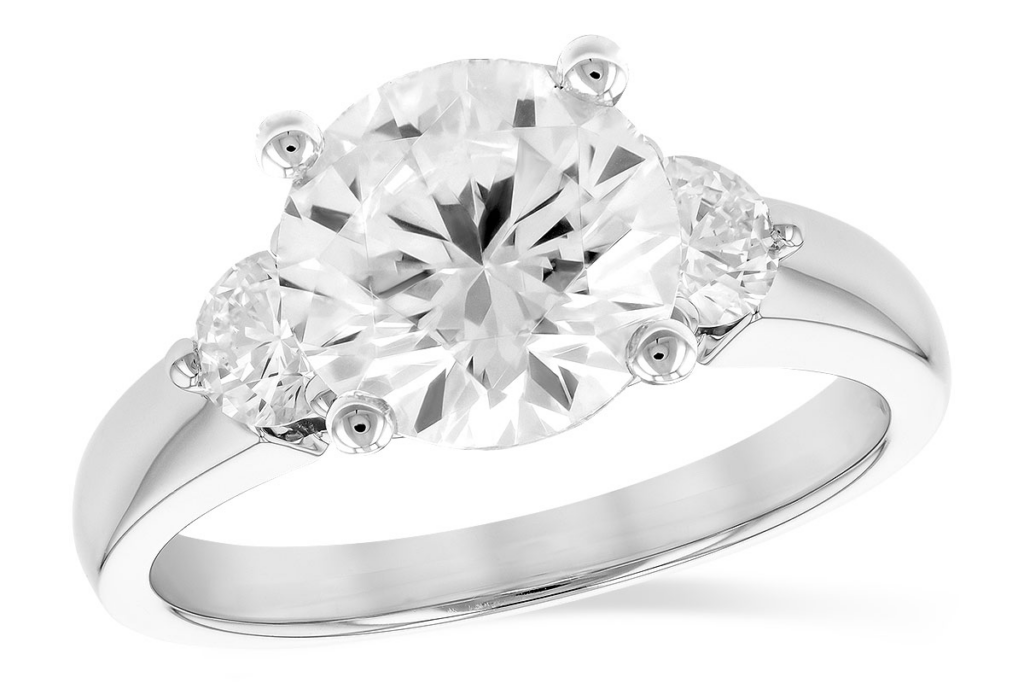Gold is one of the most expensive metals known to man. In fact, the price of gold hit an all-time high in August 2020, with one ounce of gold costing over $2,000. That makes gold a fantastic investment and a great way to get fast cash if you ever find yourself in a pinch.
But there’s one big problem with gold: it’s insanely easy to fake.
There are countless stories of people being scammed out of their life savings by unscrupulous gold dealers selling fake gold bars or coins. And if you have gold rings, necklaces, or other jewelry, it’s even easier for someone to pretend that a copper or brass piece is solid gold.
If you’re thinking about buying gold or if you have some gold at home that you’re not sure about, there are a few methods you can use to test if it’s real.
While no single test is foolproof, if you perform a few different tests, you should be able to get a pretty good idea of whether or not your gold is genuine or not.
How to Test If Gold Is Real with a Lighter
The first test is also the easiest test: try to burn your gold. If it’s real gold, it will get brighter as you apply the flame but it won’t actually catch fire and burn. If your gold piece starts to smoke or gets darker, you likely have imitation gold.
Why this works:
Real gold does not burn or get dark under heat. It simply melts: this is why it can be molded and shaped into different forms without losing its luster and beautiful yellow gold color.
On the other hand, other metals like copper, iron, and brass will change color and get darker when exposed to flame. If your item only has gold plating, then the gold coating will melt and you’ll see the darker metal underneath.
Tips:
- Use a butane lighter for this test, not a regular lighter.
You need an intense and stable flame that you can control easily, which is not something you can get with an ordinary disposable lighter. Before conducting the lighter test, make sure your butane lighter has a full tank.
- Heat your gold for at least 60 seconds.
The flame should get hot enough to actually affect the metal. If you’re testing a large piece of gold, like a gold bar, you may need to heat it for longer.
- Handle the gold with something inflammable.
The gold will get very hot, so make sure you’re holding it with a pair of tongs or pliers.
Look for Stamps or Hallmarks in Your Gold Jewelry
Another quick and easy way to tell if your gold is real is to look for stamps or hallmarks. Most real gold is stamped with a hallmark that indicates its purity, aka its karat.
The karat is the unit used to measure the purity of gold. The higher the karat, the purer the gold. The most common karats you’ll see are 10k, 14k, 18k, 22K, and 24k.
Here’s a quick breakdown of what each karat means:
- 24K: this is the purest form of gold and it’s almost always too soft to use in jewelry or other items
- 22K: 22 karat gold is 91.6% pure gold
- 18K: 18 karat gold is 75% pure gold
- 14K: 14 karat gold is 58.5% pure gold
- 10K: 10 karat gold is 41.7% pure gold
If your gold piece doesn’t have a stamp, that doesn’t necessarily mean it’s fake. Older pieces of gold may not be stamped because stamping wasn’t required in the past.
Still, reputable gold dealers will always stamp their gold with a purity mark because it’s the best way to guarantee that their customers are getting what they’re paying for.
These marks will usually be located on the inside of a ring, on the clasp of a necklace or bracelet, or on the posts of gold earrings.
Check Your Gold for Letter Markings
In addition to stamps or hallmarks, some gold pieces will also have other letter markings. These markings represent important information about the jewelry, such as whether it’s gold plated, the manufacturer, or the country of origin.
Here are some common markings you might see:
- GP (Gold Plated)
- GF (Gold Filled)
- GE (Gold Electroplated)
- GEP (Gold Electro Plated)
- HGP (Heavy Gold Plated)
- HEG (Heavy Gold Electroplated)
- RGP (Rolled Gold Plate)
All of these markings basically mean one thing: your “gold” jewelry is not made entirely of gold. If it’s plated, then it’s usually made of cheap metals like brass covered in a very thin layer of gold.
The “heavy” designation means there’s a thicker outer layer of gold, but it’s still not genuine gold. If you see any of these markings, the piece you’re looking at is most likely fake.
Rub the Gold on Your Skin
Hold your good piece up to your skin and rub it back and forth. You may also hold it between your hands for a few minutes.
If it’s real gold, your skin will not react to the metal. If it’s fake, you may notice your skin turning green, blue, or black where it’s come into contact with the jewelry.
Why this works:
Gold is a hypoallergenic metal, which means it won’t cause an allergic reaction when it comes into contact with your skin. That’s why it’s a good choice for people with metal allergies.
However, other metals tend to react with human skin and sweat. That’s why you may notice a black smudge on your skin after wearing fake gold.
Check the Size and Weight of Your Gold
For this test, you’ll need a piece of real gold that’s identical or similar in size and weight to the piece you’re testing. Use a caliper to measure the thickness of both pieces.
Then, use a digital scale to weigh each piece. If your jewelry is made of real gold, it should be approximately the same size and weight as the piece of real gold you’re comparing it to.
Caution:
While this test can help you get a better idea of how much your gold piece should weigh relative to its size, it’s not a foolproof way to tell if gold is real.
Some fake gold pieces, such as those plated with gold, can be the same size and weight as real gold because they’re made of a solid metal base that’s covered in a thin layer of gold.
Also, keep in mind that different karats of gold have different densities. The more pure the gold, the higher its density. So, a 24k gold ring will be denser than an 18k gold ring, for example.
How to Test If Gold is Real with a Magnet
Hold a magnet next to your gold piece. If the magnet sticks to your gold, then it’s likely fake.
Why this works:
Gold is not a magnetic metal, so it won’t stick to magnets. That’s why this test is a quick and easy way to tell if your jewelry is made of real gold.
However, keep in mind that some base metals used as gold alloys can be non-magnetic, so this test isn’t foolproof.
Tip:
Use a strong magnet, such as a neodymium magnet, for this test. Otherwise, you may not get an accurate read.
How to Test Gold Using Ceramic
Get a ceramic plate and scratch the gold piece you’re testing against it.
If the gold is real, you should see a yellowish streak on the plate. If it’s fake, you’ll see a dark streak.
Why this works:
Gold is a very soft metal, so scratching it with a hard object like ceramic will leave a golden or a yellowish streak.
On the other hand, fake gold is often made of metals that are darker in color, so you’ll see a dark streak instead.
Tips:
- Use an unglazed ceramic plate for this test. Glazed ceramic won’t show the color of the metal as clearly.
- Use a light touch when scratching the ceramic. You don’t want to damage your gold item.
Caution:
Gold-plated or gold-filled jewelry can also leave a yellowish or golden streak due to the thin layer of gold on the surface. But since these types of jewelry are not made entirely of gold, you’ll typically see a darker streak underneath the yellowish one.
How to Do the Float Test to Check If Gold is Real
Fill a cup or bowl with water and carefully drop your gold piece into it.
If the gold is real, it will sink to the bottom of the cup. If it’s fake, it will float to the top or hover in the middle of the cup.
Why this works:
Gold is a very dense metal, so it will naturally sink straight to the bottom of a cup or bowl of water.
On the other hand, fake gold is often made of lighter metals and will be slower to sink or not sink at all.
Just like the magnet test, however, this test isn’t foolproof. Some fake gold is made of metals that are just as dense as real gold, so it will sink in water.
Again, it’s best to conduct this test in conjunction with other tests to get a more accurate idea of whether or not your gold piece is real.
How to Test Gold With Vinegar
Apply a few drops of white vinegar to your gold jewelry. Real gold will not change color, but vinegar can cause fake gold items to react and change color.
Why this works:
Vinegar is incredibly corrosive. So, if your gold jewelry is made of a different metal or alloy, the vinegar will cause it to tarnish. Gold is a non-reactive metal, so it will not react to vinegar.
Tips:
- Use distilled white vinegar for this test. Other types of vinegar, such as apple cider vinegar, may not be as effective.
- Apply the vinegar to a discreet part of your jewelry, such as the back or underside. That way, you won’t ruin the appearance of your jewelry if it’s fake.
How to Test Gold with Acid
This is a more advanced gold testing method and should only be done if you’re experienced in working with chemicals.
You’ll need two types of acid for this test: nitric and nitrohydrochloric. Nitric acid will dissolve any non-gold base metals in your piece, while nitrohydrochloric acid will dissolve gold.
To conduct the test, get a dark surface like a black stone. Rub your gold jewelry on it until it leaves a visible mark. Apply a few drops of nitric acid to the mark. It will dissolve any metal that’s not gold, so it should basically clear out the mark.
If the mark’s still there, apply a drop or two of nitrohydrochloric acid. Unlike nitric acid, this one can dissolve gold, so if the mark disappears, it’s probably because your jewelry is made of gold.
Safety Tips:
While this test is more reliable than most DIY methods of testing gold, it’s also more dangerous. Before you try the acid test, remember these precautions:
- Wear gloves and eye protection.
- Work in a well-ventilated area.
- Avoid skin contact with the acids.
- Use only small amounts of acid.
- Dispose of the acids properly when you’re done.
- Conduct the test on a small, inconspicuous part of your jewelry.
As you can see, there are many different ways to test if gold is real at home. But keep in mind that none of these tests are foolproof.
The best way to confirm that your gold jewelry is real is to take it to a professional jeweler, who will use more sophisticated methods to test it such as a loupe, electronic gold tester, or X-ray fluorescence.
Still, these DIY tests can give you a good indication of whether or not your gold is real, and they’re definitely worth a try.
How to Avoid Buying Fake Gold Jewelry
Short of taking your jewelry to a professional for testing, there are a few things you can do to avoid buying fake gold jewelry in the first place:
Ask for a guarantee or certificate of authenticity from the seller.
Before you buy gold, get a written description of the jewelry, including its carat weight, color, and any other important details. A receipt is even better. Request an appraisal document if possible.
Look up the maker’s mark online.
Every goldsmith has their own unique mark, which they stamp on each piece of jewelry they make. You can use this mark to look up the jeweler online and verify their reputation.
Instead of a maker’s mark, you may also see a symbol for the company that sold the jewelry, such as a store name or logo. For instance, Tiffany & Co. stamp their jewelry with “Tiffany & Co” along with the karat purity of the piece.
Check the current market value of gold.
The price of gold fluctuates, so it’s a good idea to know how much it’s worth before you buy or sell gold jewelry. You can find the current market value of gold online.
When you’re looking at the price of gold, pay attention to the “spot price.” This is the current market value of gold, and it’s what you’ll use to calculate how much your jewelry is worth.
Keep in mind, however, that the spot price only applies to pure gold. Most gold jewelry is not pure gold, so it will be worth less than the spot price.
Get an independent gold jewelry appraisal.
If you’re still not sure whether or not your gold jewelry is real, take it to a jeweler for an appraisal. An appraisal is a professional evaluation of the worth of your jewelry.
A good appraiser will give you a detailed report that includes the weight, purity, and current market value of your gold jewelry. They will also take into account any special features or design elements that could add to the value of your jewelry.
Not only is this the best way to confirm the authenticity of your gold jewelry, but it will also help you sell it for the right price if you ever decide to do so.
Frequently Asked Questions
- What is the easiest way to test gold?
The easiest way to test gold at home is with a lighter, vinegar, a magnet, or an unglazed ceramic. All of these methods are safe and will give you a good indication of whether or not your gold is real.
- Does gold turn black when you burn it with a lighter?
No, gold will not turn black when you burn it with a lighter. If your gold jewelry turns black when you hold a lighter to it, it’s most likely fake.
- Does pure gold react with sunlight?
No, gold does not react when exposed to sunlight. In other words, authentic gold jewelry will not tarnish or lose its golden shine. If your item starts to change color or lose its luster, it’s probably counterfeit.
- Is gold magnetic?
Gold is a non-magnetic precious metal, so it will not stick to a magnet.
- Is 24K gold jewelry real gold?
While 24k gold is indeed pure gold, be careful of anyone who claims that their gold ring, necklace, or other jewelry is 24 karat. Pure gold is too soft to be used in jewelry, so it’s always mixed with other metals to make it more durable.
24k gold is not as common in jewelry as it once was, so if you come across a piece of jewelry that’s supposedly 24k gold, it’s more likely than not that it’s fake.
- What are the common base metals used for gold alloys?
The most common metals used to make gold alloys are silver and copper. Other valuable metals, such as palladium and titanium, are sometimes used as well.
- Are gold alloys fake?
Gold alloy is simply a term for a mix of metals. For instance, mixing real gold and sterling silver creates a gold alloy. So does mixing pure gold with metals like palladium, titanium, brass, iron, and copper.
While some gold alloys can be quite valuable, others are not worth much more than the value of the metals used to make them. That’s why it’s important to know the karatage, or purity, of your gold jewelry.
- Is gold-plated jewelry real gold?
Gold-plated jewelry is not considered real gold. The majority of the time, there is a very thin layer of gold that is applied to another metal. The gold quickly starts to wear off, exposing the metal beneath.
- Is white gold real gold?
White gold is an alloy that is made by mixing real gold with white metals like silver and palladium. The final product has a white, or silvery, color. Whether it’s real or not depends on how much gold is actually in the alloy.
Wrapping It Up
Buying gold jewelry, whether it’s a ring or a gold bar, is a big investment. Aside from conducting the DIY tests we shared above, we also invite you to take your gold jewelry here at Wulf for an expert and professional gold appraisal.
We have a team of experts who will not only test the authenticity of your gold jewelry but will also give you a FREE and no-obligation evaluation.
Aside from jewelry appraisals, we also offer jewelry repair services, custom jewelry design, and gold buying. Contact us today to schedule an appointment or ask a question.



